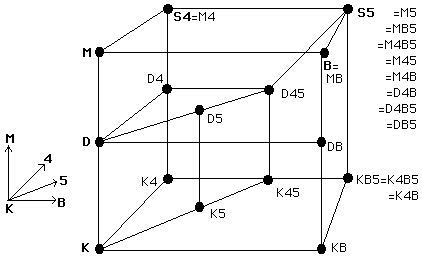Tuesday, May 22, 2007
Paradox of Analysis and Reduction
Lots of interesting issues came up today. One of them concerned what, exactly, we're trying to do when we attempt to give a philosophical analysis. Jeff King has a good discussion of that issue here. Another issue concerned reduction. One idea we discussed was that a reductive account of something gives some sort of account in terms of a more fundamental ontological level. This presupposes that there are distinct ontological levels and some are more fundamental than others in the sense that more fundamental levels are more real than less fundamental levels. Ned Markosian discusses that presupposition here.
Subscribe to:
Post Comments (Atom)

3 comments:
Markosian argues against ontological fundamentalism. Ontological fundamentalism, according to Markosian, is a conjunction of the following three theses:
The Hierarchy Thesis (HT):
(HT) The natural world is divided into a hierarchy of levels. The levels are ordered mainly by mereological relations, but also by supervenience, but also by supervenience, realization, and nomological relations.
Mereological Atomism (MA):
(MA) There is a bottom level in the hierarchy- the level of mereological simples.
Ontological Fundamentalism (OF):
(OF) Only the mereological simples of the bottom level of the hierarchy are maximally real; any putative entities from other levels are either not real at all or else less real than the simples.
My question is with the formulation of (HT). While not all of the (eight) reasons Markosian gives for rejecting (OF) explicitly involve (HT)- many are actually counterexamples to (MA)- (HT) does play a part in his general argument against (OF).
I’d like to suggest that (HT) is not the only way to capture the intuitive claim that there are different levels of reality.
Here is the picture of reality suggested by (HT): Reality is composed hierarchically of levels. These levels are the levels of (i) gigantic macroscopic objects, (ii) large macroscopic objects, (iii) ordinary sized macroscopic objects, (iv) biggish microscopic objects, (v) smaller microscopic objects, (vi) items that are smaller, (vii) and so on.
Essential to (HT) is the following picture: The objects in (i) are composed of the objects in (ii); objects in (ii) are composed of the objects in (iii); objects in (iii) are composed of the objects in (iv)….and so on.
Part of the problem Markosian sees with (HT) is that it appears to commit us to different levels of reality. Objects higher up in the hierarchy would presumably be “less real” than objects closer to the bottom- in short, a plenitude of ‘degrees of existence.’ But if we believe in that, we will need to make corresponding distinction between degrees of existence in our uses of existential and universal quantifiers.
But couldn’t we instead say something close to (HT) which didn’t commit us to a potentially infinite plurality of degrees of existence? Couldn’t we instead say that there is one, and only one, distinction- a distinction between (i) the fundamental level, and (ii) everything else. Then we need to say only that all whatever a (concrete) object is, it is composed of entities which belong to the fundamental level. This would still appear to be consistent with physicalism, supervenience, epiphenomenalism, and other theses that purport to be reductive.
Admittedly, this reformulation of (HT) would still (possibly) commit us to two levels of reality or existence. But that seems better than 5 or 8, or infinitely many. (Some people, McDaniel for one, appear to think this is ok. See his “Ways of Being.”)
Back in my day, when things were better, the hierarchy of levels was primarily discussed within the philosophy of science although it was oftern taken to have metaphysical import.
For instance, physics was taken by many to be more fundamental than biology because all biological laws could be explained in terms of physical laws (but not vice versa). The explanation was taken to require a type-type substitutability. Explanations of _individual_ biological events in terms of individual physical events were not taken to be sufficient. To keep physics as more fundamental than biology, one would have to drop type/type biophysical bridge principles in favor of some sort of supervenience. Thos who use this sort of move will have a hard time in making the ontological move of accepting, say, physical entities while denying biological ones. Sure, you can explain why this physical agglomeration constituting a certain antelope survived, but to explain why certain types of antelopes (e.g., the ones with gun-turrets on their horns) survived, it is much more convenient to use evolutionary explanations. And, if we want to accept those entities that play a role in our best explanations, then bio entities are in even if they supervene on physical ones. Explanation is at least partly pragmatic.
Post a Comment